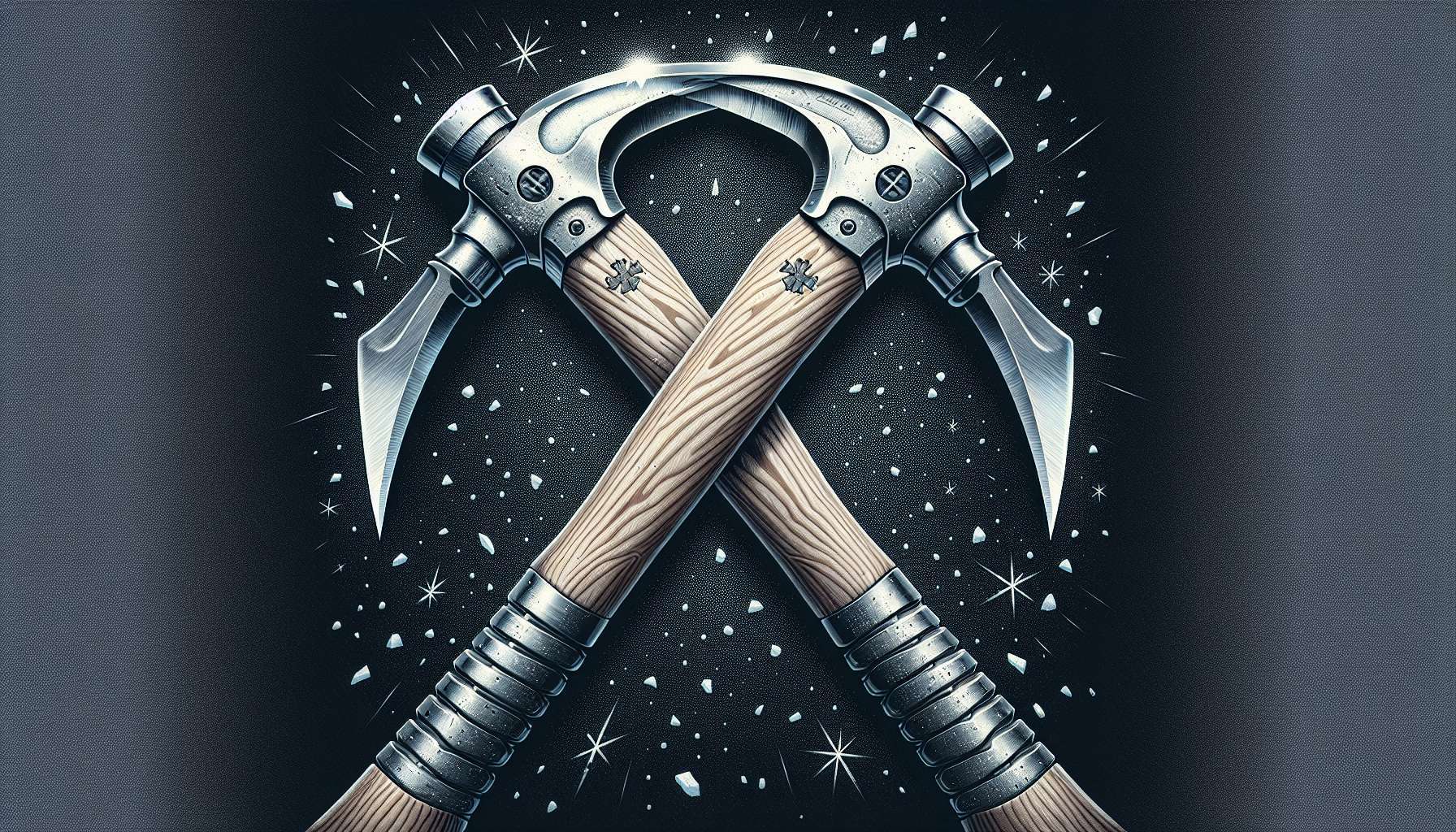The Ultimate Guide to Trekking Poles
Are you an outdoor enthusiast looking to enhance your hiking experience? Do you want to improve your stability and endurance while trekking through rugged terrain? If so, then trekking poles might be just what you need. These simple yet powerful tools can make a world of difference in your hiking adventures. In this comprehensive guide, we will delve into the world of trekking poles, exploring their history, benefits, uses, and much more. So, grab your gear and get ready to hit the trails with confidence!
The Evolution of Trekking Poles

Trekking poles have come a long way since their humble beginnings as a simple walking stick. Historically, trekking poles were primarily used by shepherds and farmers to navigate steep and rocky terrain. Over time, outdoor enthusiasts and hikers began to recognize the benefits of using trekking poles to improve balance, reduce strain on the joints, and increase stability.
In the modern era, trekking poles have evolved into sophisticated pieces of equipment, with adjustable lengths, ergonomic grips, and lightweight materials. Today’s trekking poles are designed to withstand the rigors of intense hiking and trekking, making them an essential tool for outdoor enthusiasts of all skill levels.
The Benefits of Using Trekking Poles
There are numerous benefits to using trekking poles while hiking. One of the primary advantages is the added stability and balance they provide, especially when traversing uneven or slippery terrain. Trekking poles can help distribute weight more evenly, reducing strain on the knees, hips, and ankles. This can be particularly beneficial for those with joint issues or previous injuries.
Additionally, trekking poles can help improve endurance by engaging the upper body muscles, allowing hikers to maintain a more efficient walking rhythm. They can also be used to probe the depth of snow or water, clear spiderwebs from trails, and even set up makeshift shelters in emergencies. Overall, trekking poles can enhance the hiking experience in a variety of ways.
Choosing the Right Trekking Poles
When selecting trekking poles, there are several factors to consider, including material, weight, grip type, and locking mechanism. The most common materials used for trekking poles are aluminum and carbon fiber. Aluminum poles are durable and affordable, while carbon fiber poles are lightweight and absorb shock better. Grips come in various shapes and materials, such as cork, foam, or rubber, each offering different levels of comfort and moisture-wicking properties.
Weight is another crucial factor to consider, especially for long-distance hikers who want to minimize fatigue. Adjustable trekking poles are ideal for hikers of different heights or for those who want to change the length based on the terrain. Finally, the locking mechanism should be secure and easy to adjust, ensuring that the poles remain stable during use.
Trekking Poles in Practice
Once you have chosen the right trekking poles for your needs, it’s time to put them to the test on the trail. Proper technique is essential for maximizing the benefits of trekking poles. When using trekking poles, make sure to plant them at an angle in front of you, applying pressure as you push off the ground. This will help propel you forward and provide additional stability.
On uphill climbs, use the trekking poles to push yourself up, taking some of the strain off your legs. On downhill descents, plant the poles behind you to help control your speed and reduce impact on your joints. By incorporating trekking poles into your hiking routine, you can increase your speed, reduce fatigue, and enjoy a more comfortable and efficient trekking experience.
Expert Opinions on Trekking Poles
According to outdoor experts and experienced hikers, trekking poles are a valuable tool for anyone who enjoys hiking or trekking. Professional hikers recommend using trekking poles to improve stability and reduce the risk of injury on challenging terrain. Many outdoor enthusiasts swear by the benefits of trekking poles, citing improved endurance, reduced joint pain, and increased confidence while hiking.
Some experts also advise beginners to start with shorter hikes and gradually increase the duration and difficulty level when using trekking poles. By incorporating trekking poles into your hiking routine, you can elevate your outdoor experience and explore more challenging trails with ease.
Common Misconceptions About Trekking Poles

Despite their many benefits, trekking poles are sometimes met with skepticism or misconceptions. One common misconception is that trekking poles are only for older or injured hikers. In reality, trekking poles can benefit hikers of all ages and fitness levels by providing added stability and reducing strain on the joints.
Another misconception is that trekking poles are unnecessary or cumbersome. While some hikers may prefer to hike without poles, many outdoor enthusiasts find that trekking poles enhance their hiking experience and provide additional support on challenging terrain. By giving trekking poles a try, you may discover a newfound appreciation for these versatile tools.
Comparative Analysis of Trekking Poles
When comparing different trekking poles on the market, it’s essential to consider factors such as weight, durability, grip comfort, and price. Some trekking poles may be more suitable for ultralight backpacking, while others are designed for heavy-duty use in rugged environments. Consider your hiking style, terrain, and budget when selecting trekking poles that meet your needs.
Additionally, read reviews and seek recommendations from other hikers to get a better sense of the pros and cons of specific trekking poles. By doing your research and comparing different options, you can find the perfect trekking poles that will enhance your hiking adventures for years to come.
FAQs About Trekking Poles
1. Are trekking poles necessary for hiking?
While trekking poles are not essential for every hiker, they can provide significant benefits in terms of stability, balance, and endurance, especially on challenging terrain.
2. How do I adjust trekking poles?
Most trekking poles have adjustable lengths that can be customized to your height and the terrain you are hiking. Simply loosen the locking mechanism, adjust the length, and tighten the lock to secure the pole in place.
3. Can I use trekking poles for other activities?
Yes, trekking poles can be used for a variety of outdoor activities, including backpacking, snowshoeing, trail running, and even Nordic walking. Their versatility makes them a valuable tool for outdoor enthusiasts of all kinds.
To Wrap Things Up
Overall, trekking poles are a versatile and valuable tool for hikers and outdoor enthusiasts looking to enhance their hiking experience. By choosing the right trekking poles, mastering proper technique, and incorporating them into your hiking routine, you can enjoy increased stability, reduced fatigue, and improved endurance on the trails.
Whether you are a beginner hiker or a seasoned outdoor adventurer, trekking poles can help you navigate challenging terrain with confidence and comfort. So, next time you hit the trails, don’t forget to bring along your trusty trekking poles and take your hiking experience to new heights!




